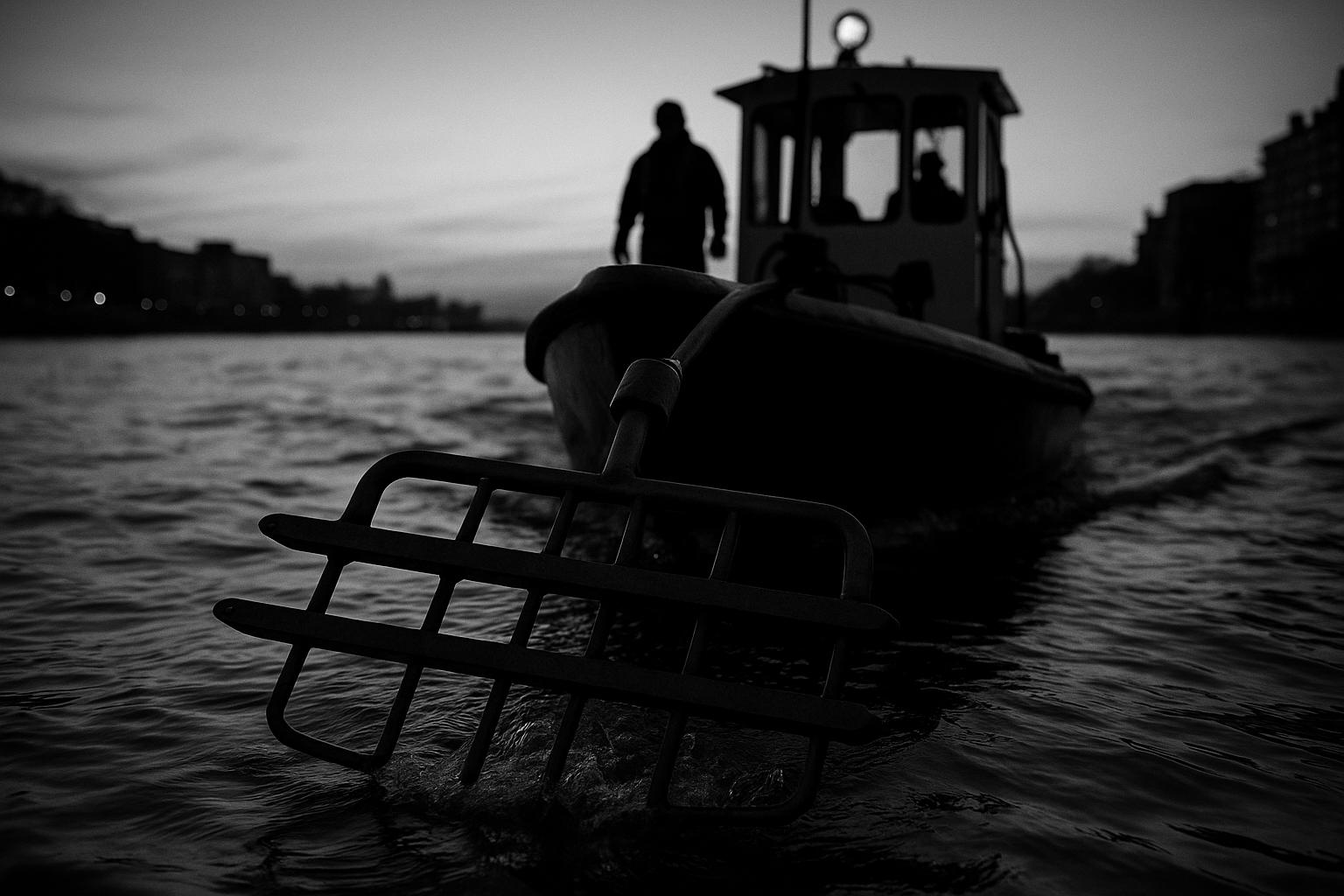The Environment Agency has been carrying out intensive fish surveys along the non‑tidal Thames this summer, deploying a specialised “boom” boat that uses a pulsed electric field to temporarily stun and capture fish for study. The work, conducted between Iffley Lock in Oxford and Teddington Lock in London, is part of the agency’s long‑running programme of standardised fisheries monitoring designed to assess species composition and river health. According to the Environment Agency, the vessel — nicknamed the Thames Trout — is fitted with the largest front‑mounted underwater electrodes in its fleet to cover wide swathes of the channel more efficiently.
Speaking to the Oxford Mail, Jonathan Baxter, team leader at the Environment Agency, described the method and its timing: the electric field gently disrupts a fish’s nervous system so officers can net individuals at dusk, when the river is quieter and many species move nearer the surface. Captured fish are put into aerated holding tanks to recover, then identified, measured and released. The agency’s own guidance and blogposts emphasise that when conducted by trained crews this form of electrofishing is designed to minimise harm while producing repeatable scientific data on age, weight and species make‑up.
The surveys have produced substantial sample numbers. The agency said that in the 2024 survey between Iffley and Benson more than 6,200 fish were caught, and that teams have recorded in excess of 10,000 fish in surveys this year — results the Environment Agency interprets as showing an abundance of healthy fish in surveyed stretches. Industry research supports the value of combining boom‑boat electrofishing with hydroacoustic methods on large, managed lowland rivers: peer‑reviewed work by Environment Agency scientists and collaborators concludes that complementary techniques provide robust time‑series data that can detect long‑term spatial and temporal trends, while also noting limitations around detectability and survey design.
Nevertheless, the agency’s broader operational record this summer underlines that impacts from heat and low flows are a real and uneven threat. In July 2025 fisheries teams used electrofishing techniques to rescue roughly 50 brown trout from a stressed stretch of the River Lambourn, moving fish to deeper reaches after low water levels and high temperatures left them vulnerable. The Lambourn operation — described in an Environment Agency press release — illustrates how dry spells can force reactive conservation measures even as monitoring work on the Thames so far shows resilience in that system. The agency itself cautioned anglers that some species may need longer to recover after extreme heat, urging care when handling catches.
The Thames monitoring effort sits within a decades‑long surveillance programme. Environment Agency summaries from previous surveys have recorded a wide variety of species, including freshwater and marine juveniles in tidal reaches, and volunteers and partner organisations have long contributed to data collection. Scientific assessments underline the importance of continued, standardised monitoring to inform management of abstraction, transfers and climate‑linked temperature change — and to identify barriers to migration for species such as eel and sea trout.
There is also a public‑facing element to the work: rod licence revenue helps fund sustainable fisheries management. Anglers aged 13 and over are required to hold a licence to fish for salmon, trout, eel or freshwater species; junior (13–16) licences are available and one‑day, eight‑day and annual licences can be purchased through official channels. The Environment Agency’s fisheries enforcement officers support compliance with national and local byelaws, working with clubs, the Angling Trust and police to protect stocks and habitats.
Taken together, the surveys illustrate both the strengths and the limits of contemporary river management: standardised electrofishing and hydroacoustic monitoring deliver the detailed data managers need to detect trends and guide action, yet recent local rescues show that extreme weather and low flows can still produce acute conservation challenges. According to the Environment Agency, maintaining and extending evidence‑based monitoring is essential if river managers are to spot emerging problems early and tailor interventions to protect fish populations and the people who enjoy angling on the Thames.
📌 Reference Map:
##Reference Map:
- Paragraph 1 – [1], [2]
- Paragraph 2 – [1], [2]
- Paragraph 3 – [1], [5]
- Paragraph 4 – [7], [1]
- Paragraph 5 – [6], [5]
- Paragraph 6 – [3], [4], [1]
- Paragraph 7 – [5], [7], [1]
Source: Noah Wire Services
